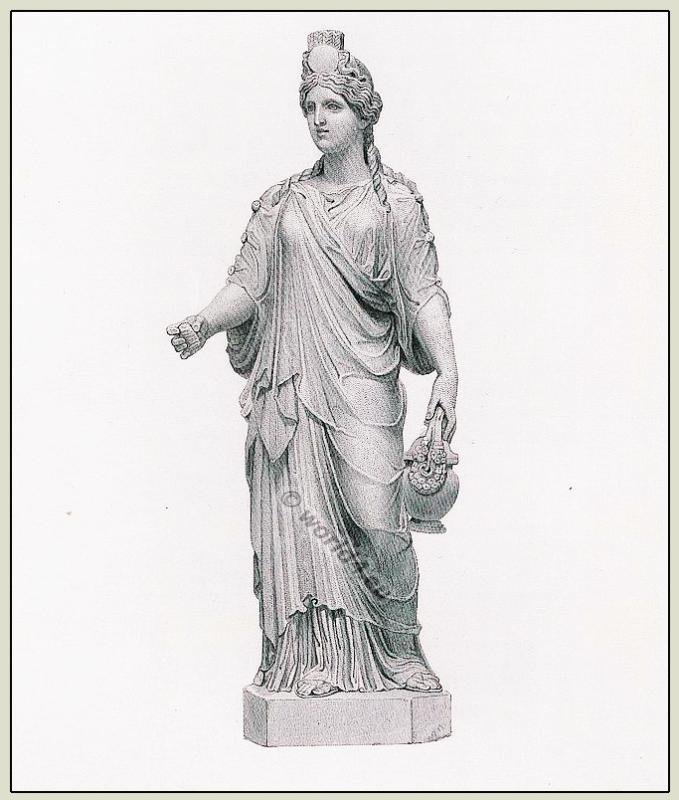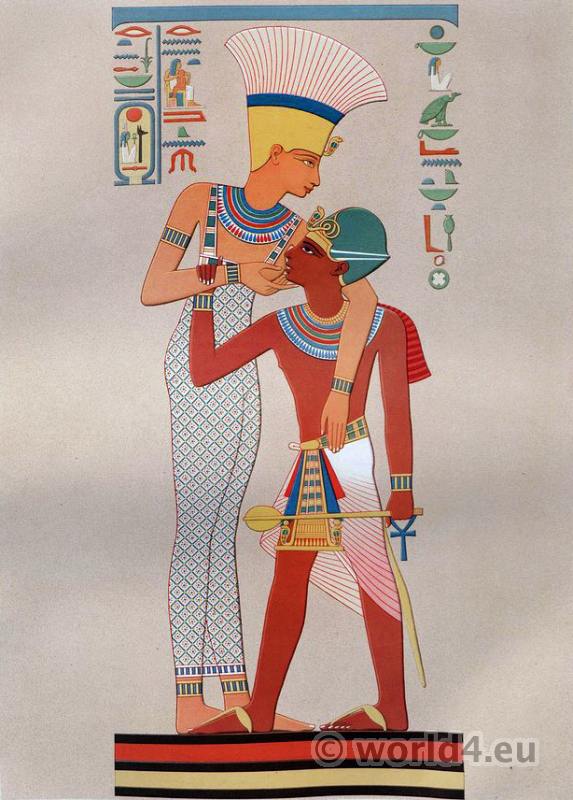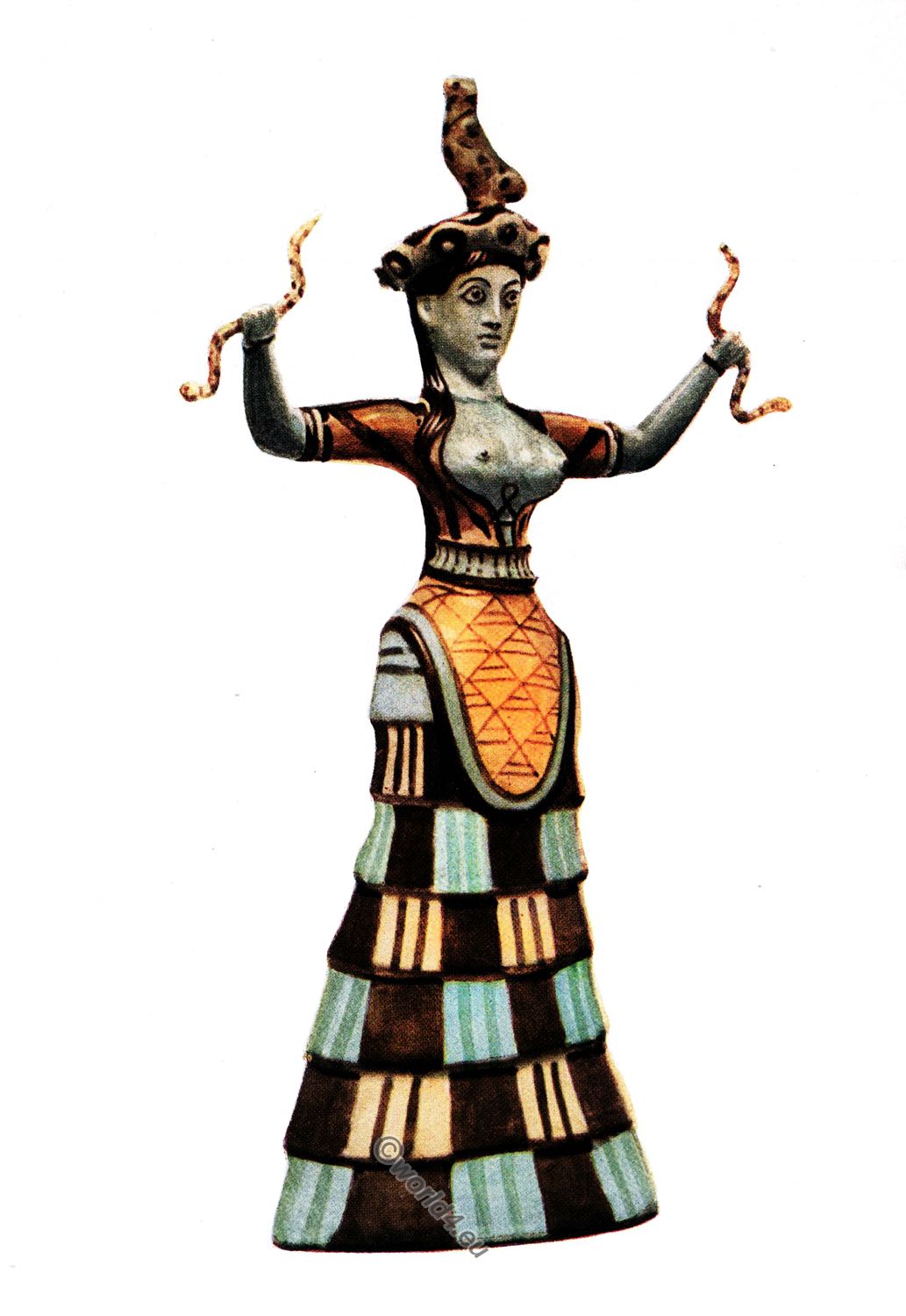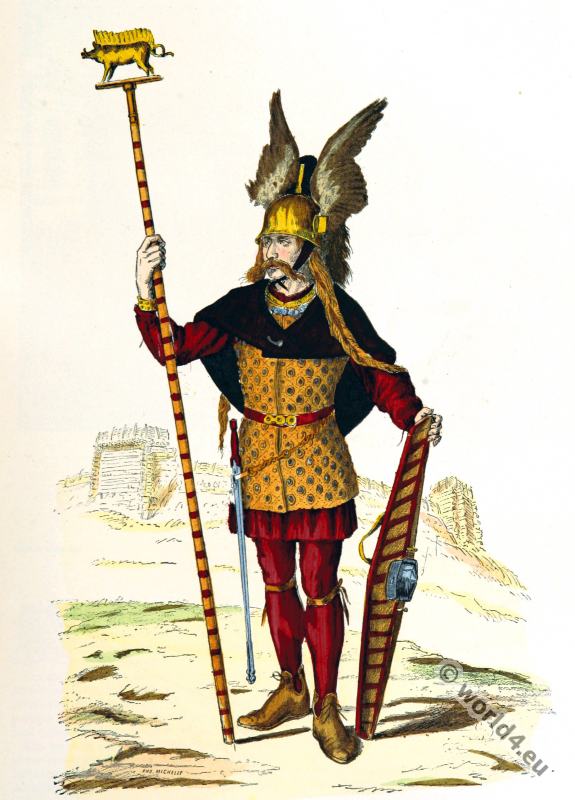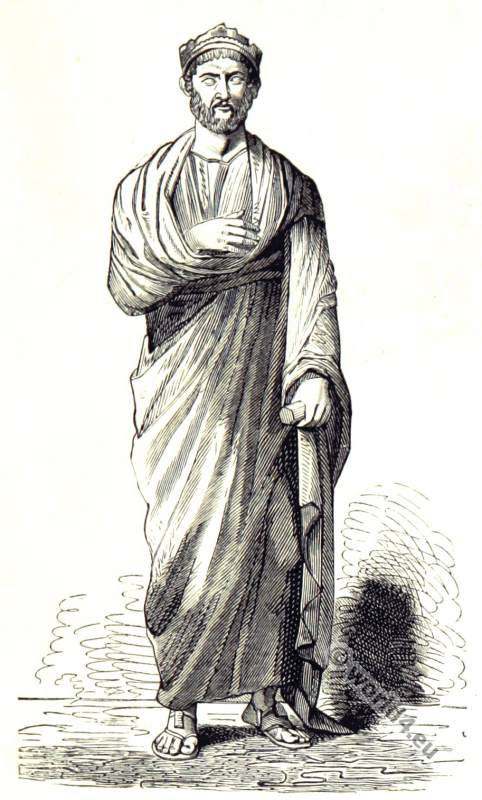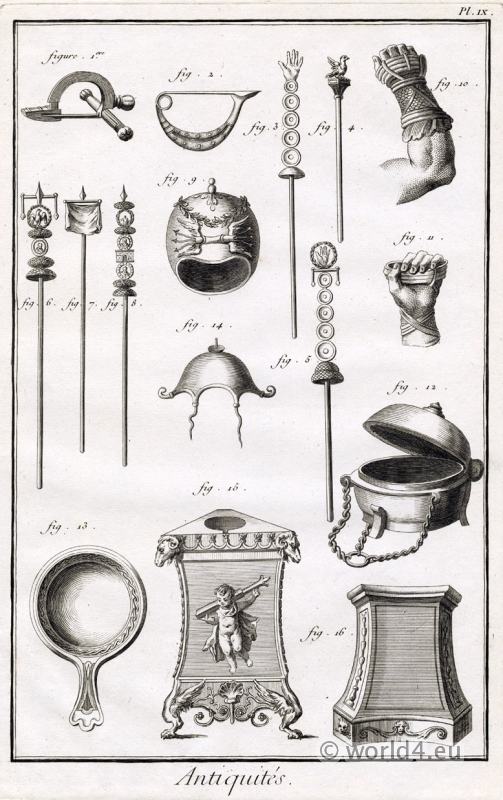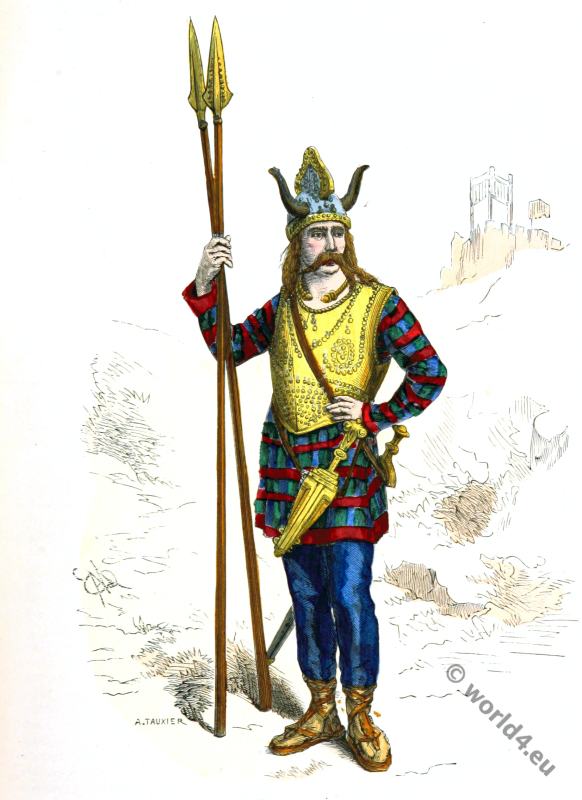Statue of Ceres, or Isis in long tunic
Ceres is the Roman goddess of agriculture, fertility and marriage. Similarly, it is considered as lawgiver. She was the daughter of Saturn and Rhea. In Greek Demeter is Ceres.
“A statue of Ceres, crowned in the manner of the Egyptian Isis. In front of the diadem is a disk or globe placed between two serpents, and surmounted with ears of corn, conformable to the description which is given of this goddess by Apuleius. In her right hand are some ears of corn and in her left hand she holds the thuribulum,” or rather situla. (1)
This figure is clothed in a very long and ample tunic descending quite to the ground, leaving visible only the extremities of the feet; the sleeves are extremely full, falling down to the elbows, and fastened, along the upper side of the arms, only by fibulae. Over this she wears a pallium, which consists of an oblong piece of cloth, doubled at about one third of its height from its upper end, and fastened upon the right shoulder, the double passing under the left arm, and the open edges hanging down the right side; large bullæ, probably of lead, being fastened to each corner to prevent its flying too much about to the inconvenience of the wearer. That which was originally attached to the corner which hangs down in front, has been broken off. On her feet are slight, open sandals.
Her hair is parted in front, and drawn in wavy locks to the back part of the head, where it is collected into a knot, whence fall two curly ringlets on each side, resting upon the shoulders. In the right hand, besides the ears of corn which are folded back, are pieces of fruit, probably an apple and a date, not seen from the position of the hand as represented in the engraving; and in the left hand a garland composed of flowers hangs over the side of the situla, disclosing within the bend the ring into which the handle is inserted.
This figure has received the name of Ceres chiefly perhaps on account of the corn and fruit, which are held in the right hand; but this hand is a restoration, probably taken from some ancient statue, but certainly not belonging to the one now before us, as, in proportions and workmanship, it does not correspond with the left. No conclusion, therefore, can be safely drawn from these adjuncts, and the similar statues in other collections represented with the situla are of little use in the illustration of this figure, as in nearly every case they have both arms restored. But, as all the female figures on coins and bas reliefs with the situla appear to be representations of Isis, we are disposed to think that either the sistrum or some other attribute of that goddess was held in the right hand of the statue now under consideration.
The head of this figure, though it appears rather large in proportion to the body, is, we believe, the same which originally belonged to it. The objects above the disk, which have the appearance of ears of corn, are in the situation where, upon a genuine Egyptian figure, would be seen two large feathers; whether the artist, copying what he did not understand, ignorantly converted the feathers into ears of corn, or whether it was designedly so done in conformity with a practice not unfrequent in Rome, of modifying or altering a symbol when one or more divinities were blended together, it would be difficult to decide.
From the statement of Diodorus, it would appear that in his time Ceres and Isis were scarcely distinguished from each other, and it is a hopeless task to attempt to follow the Romans in these pantheistic combinations of divinities by which they made each a representative of the whole Olympian conclave. It is not improbable then that this figure was intended to represent the union of the two divinities, Ceres and Isis.
This statue is not remarkable for excellence of workmanship, or perfect beauty of design, being rather short and broad in its proportions; the draperies however are gracefully and skilfully arranged. It is probable that it was executed about the time of the Emperor Hadrian, or perhaps a little later. Under the earlier Emperors the worship of Isis had been discouraged, her statues destroyed, and her temples rased to the ground; Hadrian however gave this superstition some countenance, and appropriated part of his Villa Tiburtina to the use of its votaries; Commodus and Caracalla still further promoted the same worship; and, as about this epoch Rome abounded with exotic divinities, and the exercise of the arts was at the same time much patronised, we find in the statues of the period several examples of the combinations of mythological symbols recorded by the contemporary historians.
This statue was probably executed while such a spurious taste prevailed, and we are induced the rather to assign it to this period, and to Roman artists, because, in the purer ages of Greece itself, these illegitimate combinations were little known. The neck of this figure has been broken, the end of the nose restored. It was formerly in the Maccarani Palace at Rome. Height 4 f. 2 in.
(1) Thuribulum: A two-part vessel of a chain construction that has been used to burn incense in coals. Situala is a metal vessel type in the Etrusco-Italic area. Often it is decorated with a figural reliefs driven. The Situlae art style is typically one of the main sources of contemporary illustrations.
Source: A description of the collection of ancient Marbles in the British Museum by Combe Taylor, London 1861.
Related
Discover more from World4 Costume Culture History
Subscribe to get the latest posts sent to your email.

